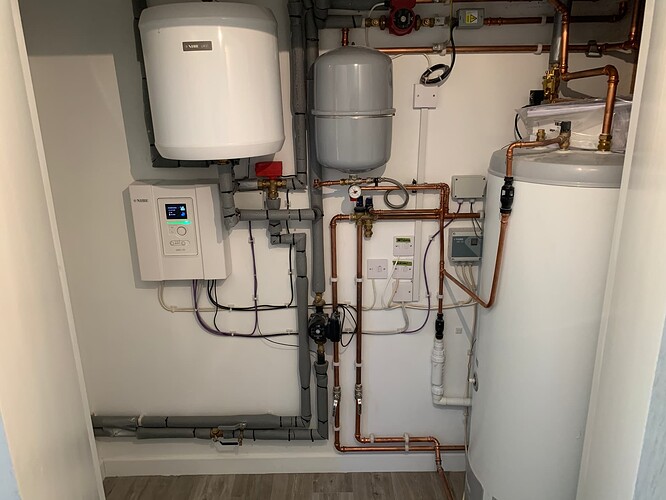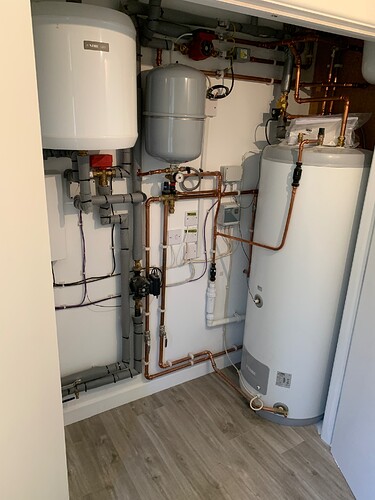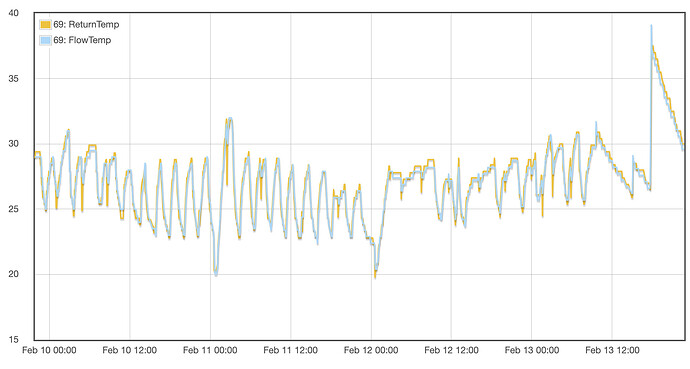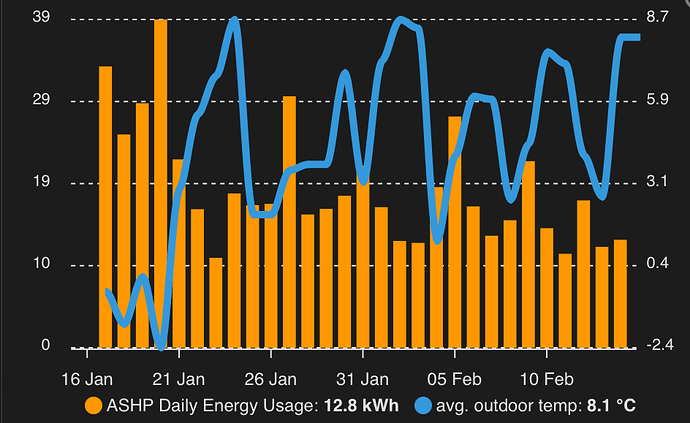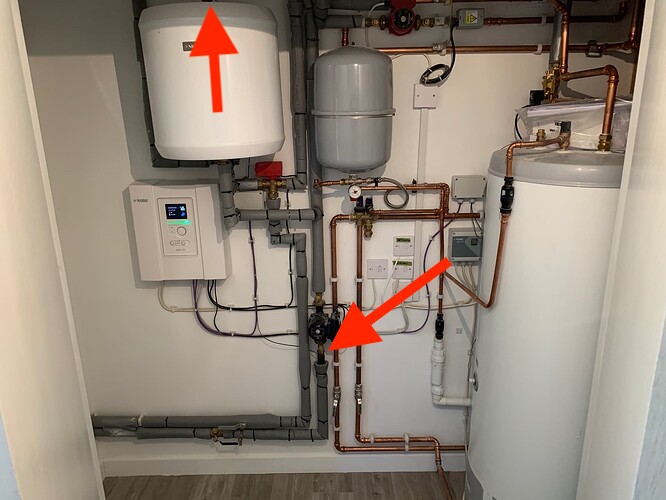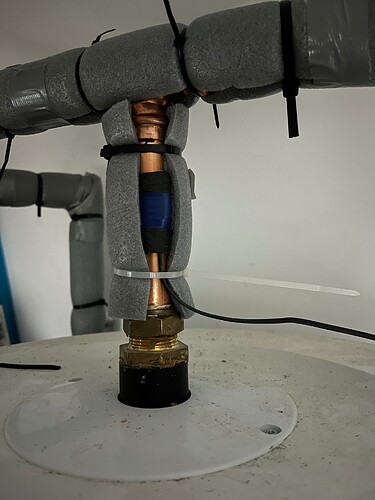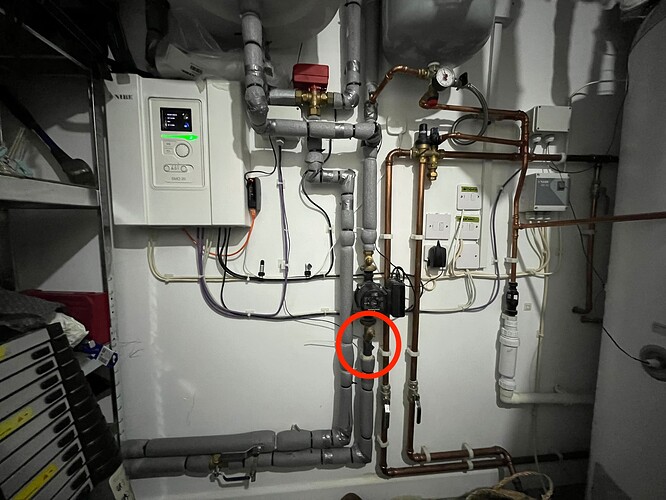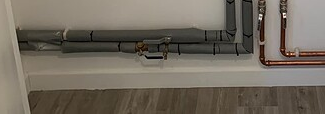Hello,
As with so many others, my ASHP is misbehaving and consuming more than I think it should. I am sending data to EmonCMS and my graphs don’t look like all those posting their good performance all over social media etc.
My Setup
2017 completed detached 4 bed in Southern Scotland. 8kw Nibe F2040 with SMO20 controller ASHP, seems to have buffer tank and 200l hot water storage and some other stuff in there too:
House appears well insulated, has MVHR working well with rads and towel rails upstairs and wet UFH downstairs. 6kw solar array and 10kWh battery storage.
I’ve been building a smart home using HomeAssistant and the integrations have (mostly) helped shed light on where all all the energy is being used. In my haste I did install Tado too, but since watching Heat Geek videos, specifically not to ‘zone’ and increasing the surface area to heat, have reconfigured much of this to ensure the flow through emitters is maximised; ie, only closing valves if the room is super hot, usually due to solar gain etc.
My Issues
The ASHP is reporting very close flow and return temperatures. The UFH suffers from this also, but less acutely. There is maybe 5/6 degrees difference in flow and return for UFH running the system at about 25-30 degrees.
The ASHP flow and return are always very close. When the ASHP is providing heat it is not unusual for me to see the return higher than the flow (!!) and the boiler in a regular cyclic pattern.
I am in the process of balancing and fillings the loops on the UFH with balancing the radiators next on the list.
It is not unusual for our 10kwh batteries to be flat before lunch due to the usage of the ASHP which just can’t be right. The house is plenty warm enough, indeed I might even try a lower curve, but at such low flow temps I suspect the problems with deltaT flow / return will only be exacerbated…
So, why isn’t my heat pump emitting the heat it is generating and what can I do about it to make the ASHP work as they are intended?
